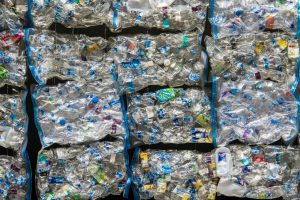REPORT: C-THRU Deep Dives
READ C-THRU’S LATEST REPORT HERE
The petrochemical sector produces many of the goods we rely on for everyday life, from the paint on our walls and the fertilisers that help put food on our plates to the plastics in our laptops, clothes, and medical devices. But all this value currently comes with a large environmental price tag.
According to the IEA, the sector is responsible for 30% of final industrial energy use and releases 17% of global industrial CO2 emissions1. The chemical industry has been labelled ‘hard to decarbonise’ due to its highly complex supply chains; its reliance on fossil fuel feedstocks; and the fact that emissions arise from the very chemical reactions required to create products, not just from generating energy to power those reactions.
The complexity of the industry makes it difficult to trace how materials flow through the system and are transformed from raw materials into final products. It is also hard to track exactly where and how greenhouse gas emissions are produced along the way. This complexity is compounded in that globally, data are often reported without great detail, consistency, or regularity, whilst other, more detailed datasets are shut behind paywalls. As a result, the picture of petrochemical sector emissions has so far been incomplete.
C-THRU exists to bring greater clarity, transparency, and breadth to our understanding of emissions from the petrochemical sector. Here we present preliminary results and insights from the second year of the project. In six ‘deep dives’, we showcase the work the team has been doing to shed light on where emissions are released throughout the life cycles of chemical products, the actions we can take to reduce them, and the knock-on effects for other processes within and beyond the industry.
The first three deep dives delve into some of the regional and global scenarios we have modelled for reducing greenhouse gas emissions from the chemical sector. We explore what it would take to successfully:
- decarbonise ammonia production in the US.
- cut emissions from the global production and use of nitrogen fertilisers by around 80%.
- expand chemical recycling for plastics in the US.
The remaining deep dives provide insight into some of the modelling methods and technologies we have developed and used throughout the project. We explain how our methodologies allow us to:
- map the mass flows and emissions of the sector at multiple, integrated scales.
- connect the chemical industry to its wider economic context.
- investigate the interconnectedness of the network of actors and products in the petrochemical sector.
The C-THRU team are continuing to build on this research and working to bring our key findings and recommendations together into a final report for release in 2023.
READ C-THRU’S LATEST REPORT HERE
- IEA. World Energy Balances: Overview. (2019).











